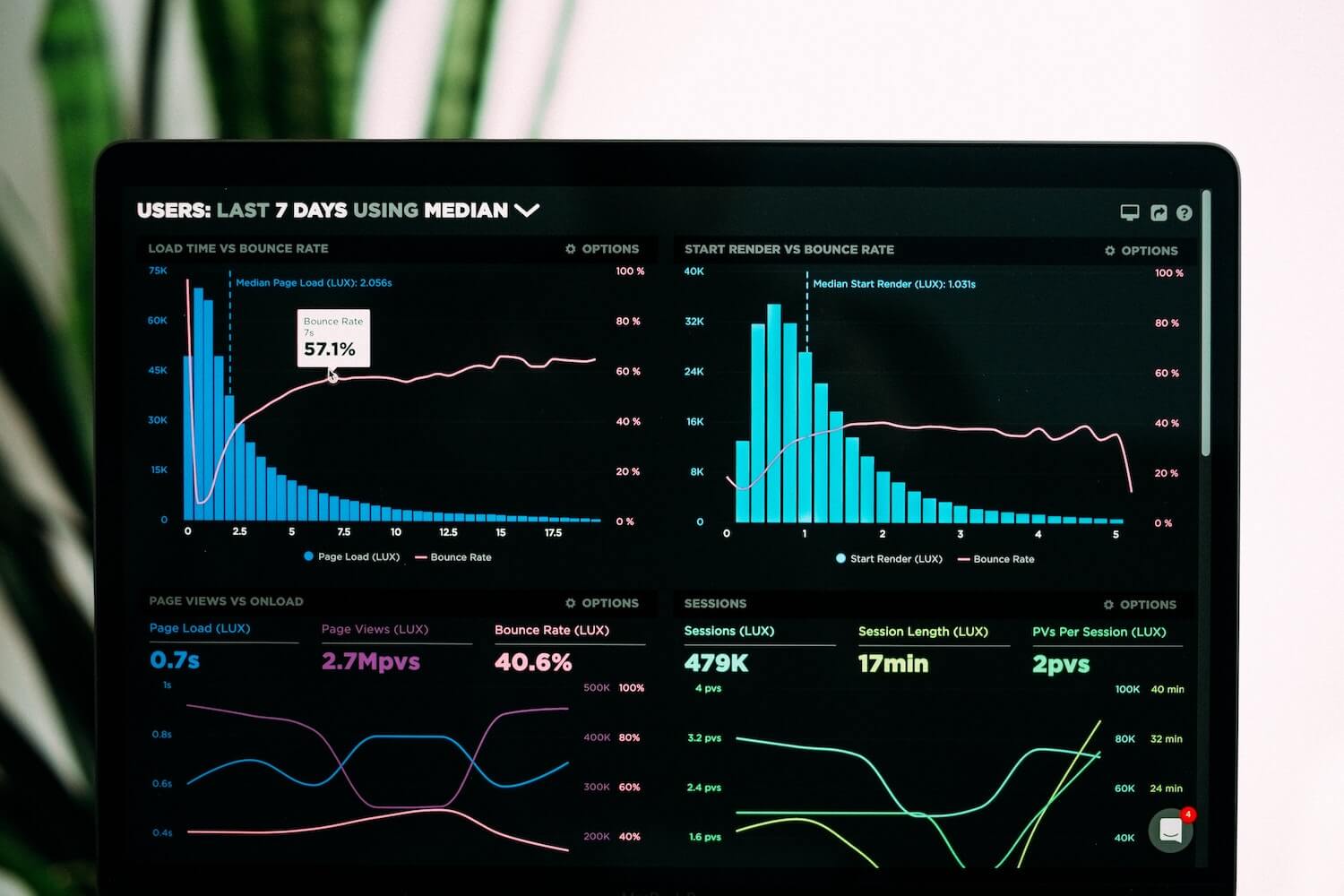This article is taken from a presentation that Vishal Sunak gave at the SaaS Metric Summit 2022. catch the full talk on demand right here.
I want to help you to be the best in SaaS, but what does it mean to be the best, and how do you know if you’re on the right track?
Well, when the great companies that you know and love go public, all their historical financials are disclosed. By looking into these financials, you get to learn the story of how they made two journeys.
The first journey is to $1 million in ARR; the second journey is to $10 million.
Every year, Bessemer Venture Partners publishes the State of the Cloud, which pattern matches all these public companies’ historical financials, and we get to learn what the best-in-class public SaaS companies look like.
If you can make it from $1 million to $10 million in ARR within a four-year window, that's considered to be good. Three years is better. If this journey takes only two years, you rank among the best.

LinkSquares, my company, is in the best category. I’m going to tell you about how how we made it to best in class, the things I’ve learned along the way, and how you can make it happen for your company.
The playbook has about 100 components, but I’m going to focus on the four most important today:
- Solving the right problem,
- Using data for GTM,
- Product development, and
- SaaS metrics
Before we get down to the essentials though, a quick introduction.
My journey
I’m Vishal Sunak, the CEO and Co-Founder of LinkSquares. I’m an engineer by trade and my focus is primarily on tech startups, particularly revenue operations, optimizations, and understanding data. That's the foundation on which I've built this journey as a CEO.
I co-founded LinkSquares in 2015, and today, it’s the leading contract management technology suite.
LinkSquares is driven by this incredible artificial intelligence that reads a contract to tell you what's inside of it super quickly. This innovative posture enabled us to take off and disrupt what had been a pretty stagnant contract management market.

When I think about what the company has achieved, it's quite overwhelming.
We’ve won Built In’s Best Places to Work Award, which says great things about what our employees think, and we're number one in three categories on G2, which says great things about what our customers think. On top of that, we’re ranked 253 for growth rate on the Inc. 5000 list.
Solving the right problem
To set us on our journey to $10 million in ARR, let's look at the first chapter in our playbook: solving the right problem.
Early-stage founders often think that the best way to operate is to identify a problem, build a solution, and then go out and talk to customers. That’s not a winning strategy. If you’re not talking to your customers early on, how do you know that you’re solving the right problem for them?
You should be focusing on finding a problem and then talking to customers before you invest time building software. If you do it the other way around, you can easily end up creating a product that the world doesn’t need or that solves the wrong problem.

Another way to think about this framework is that you want to focus on solving pain points. People pay for painkillers. Ask yourself whether you took a multivitamin today – probably not (I certainly didn’t!).
If you had a headache though, I bet you’d take a painkiller. That's the lens through which you have to view your work. Are you focusing on a real pain, and is your remedy effective?
An effective solution
You’re not going to create an effective solution and reach $10 million in ARR unless you prioritize understanding your ideal customer. Phase zero of your journey, which you cannot rush, is doing a ton of research into your target market.
LinkSquares’ ideal customers are chief legal officers, general counsels, and in-house legal teams. I’m not any of those things, nor is my co-founder, so what do we know about their pain points?
We spent a year – probably the longest year of my life – talking to general counsels and heads of legal to find out what their pain points were and whether not knowing what was inside already-signed contracts was a genuine issue for them.
This process is painful. It’s tiring. It’s also 100% worth it because it’s the only way to guarantee product-market fit and acceleration.
Once we were confident that we were solving the right problem, we were ready for the next phase of our journey: building the solution. More on that later.
Using data for Go-to-Market
Once your solution is off the ground and you start seeing some ARR, you need to start meticulously tracking all your revenue data and using it to inform your Go-to-Market strategy.
As this early stage of the journey is heavily focused on experimentation, you want to be able to trend the data over time for the highest chance of success.
So, let's talk about what kind of data to collect in every phase of the journey.
Zero to $1 million: Experiment with sources and tactics
In the early stages of your growth, you want to focus on sources and tactics. If you don't do enough experimentation in these areas, you won't know for sure how to make your successes repeatable and keep growing.
What you learn in this period is going to give you confidence when you reach $1 million on how to get to $10 really quickly.
So, let’s focus on your source data. Whenever you get a sales opportunity, capture the source. Make a note of whether it’s outbound, for example, from an account executive, or inbound, perhaps from a cost-per-lead program.
The best-performing source that you have on the journey to $1 million will likely be your best-performing source moving forward too.

The second thing, especially for the outbound sources, is to look at the tactic employed. How did you get someone to take a demonstration? Was it a phone call? An email? You should also capture the initial date that a qualification call was held and the date of the demo.
Another tip is to make sure you don’t underinvest sources that work too. Saying, “Hey, this source is doing really great, so I don’t need to invest any more in it,” is the wrong strategy.
Keep investing and track the data to see if a source is consistently generating opportunities in the long term.
Build a simple ARR model
Building a simple annual recurring revenue (ARR) model and using it to plan the year ahead is vital. Look at what your forecasts are for the start of the year and decide on a realistic target for the end of the year.
Ideally, you want to start planning for the next year no later than September. I’ve seen a bunch of companies start planning in January, and frankly, it’s a recipe for disaster. Get in early and keep it simple.
Let’s take a look at a simple ARR model. The first thing you want to do is calculate how much churn and downsell you forecast. It can be difficult to model exactly, but typically 5% to 15% of your existing ARR that’s up for renewal will probably churn.
Expansion
The next thing to think about is expansion – the increase in revenue from upselling to existing customers. At a minimum, you need to make this equal to the percentage that you're going to lose in churn.
The rest of your ARR is gonna be powered by new business. If your Go-to-Market strategy is working, this will probably be the biggest contributor to your growth. Let’s take a look at some inside strategies and tips and tricks that you can think about as you figure out this part of your ARR.
Your basic formula for new business ARR is not a difficult one: it’s just the average selling price multiplied by the projected number of new logos. What you need to figure out is how those logos are going to spread over a year.

The ends of fiscal quarters are usually great, and the end of the year is even better – everyone loves buying software in December because the perception is that they’re getting the best price.
The summer, on the other hand, is typically slow. Buyers are on vacation, not at their desks waiting to buy software. Keep that in mind as you spread the logos.
Ramp up period
This brings us to the next key part of planning, which is building in a ramp-up period for new account executives.
They’re not going to reach their full sales capacity right away. I’d advise hiring around July so they can start contributing this year, and be ready to hit their targets by January.
A lot of people make the mistake of starting to hire in January for the year ahead. It's normally June by the time you see reps really being productive, so starting earlier is key.
The first triple
Now let’s talk about the next phase of our journey, from $1 million to $3 million ARR, or the first triple as I like to call it. Closed/won opportunities start to get a lot more important at this stage because you now have the data that will allow you to place your bets with more confidence.
You should also start collecting the LinkedIn industry and company size data for each of your customers. This way you'll learn even more about where you're generating opportunities and about your ideal buyers.
The second triple
You're now through the first 12 months and you’re looking to take that step from $3 million to $10 million in ARR. You're gonna have to keep up the same data capture and analysis that you’ve been doing so far, and it’s time to graduate into a more mature set of Go-to-Market data.
I would recommend tracking these data points and reviewing them quarterly:
- Per rep productivity
- Conversion rate
- Pipeline conversion from every stage of your funnel
- Average selling price
- Sales cycle length
Not only is tracking these data points going to help you optimize your Go-to-Market strategy for future growth, but it’s also essential if you’re looking to raise capital.
During diligence with any venture capital firm, they’re going to ask you about these metrics. What’s more, you’ll be asked to capture, report, and trend them every quarter as a VC-backed company to show how you're de-risking your yearly goals.
Product development
I'm an engineer, I'm a big nerd, and I like building stuff, so let’s talk about product development. Your product is what your ARR really depends on, probably more than your ability to sell it.
However, the five most dangerous words you can hear inside the company are, “It would be cool if…” Nothing that we can come up with internally is cool. Our customer needs are what's really cool.
Even if you're part of the group that you’re building a product for, you need to be careful about introducing personal bias because you can veer the product in the wrong direction. I've seen it happen.
I always say that customers have their hands on the steering wheel, but we're in charge of the gas pedal.
Our customers are the ones who steer us on the journey to the product’s next destination, which is whatever the customer needs to say “Yes! I’ll buy it!” The value of customer feedback cannot be underestimated.
The just in time approach
At LinkSquares, we employ the “just-in-time engineering” approach, which means being ultra agile and evolving the product roadmap rapidly based on customer feedback. We’re constantly prioritizing and reprioritizing to best meet our users’ needs.
It’s important to look for trends in customer feedback too. If you’ve got loads of customers making the same request, that’s a good indication that there’s a worthwhile solution for you to build.
That being said, you want to pace yourself somewhat. At LinkSquares, we try to do one big thing per quarter that can help move the needle towards improved growth.
SaaS metrics
The final thing we want to keep in our back pockets as we embark on our journey to $10 million is SaaS metrics. For each of the metrics you track, monthly performance is a handy indicator, but you really want to play for the quarter.

These are the metrics I track and why:
- ARR, plan versus actuals: I track all three parts that I talked about earlier (new business, churn, and expansion) to see where we are in relation to our forecasts.
- Gross retention: This shows me if we’re delivering value to our existing customers.
- Net retention: This gives me an idea of the effectiveness of our upsell strategy, which is especially valuable if gross retention is low.
- Gross margin: This metric is particularly important when you’re accelerating towards $10 million in ARR, and it can let you know if your cost of goods needs to be optimized.
- CAC payback period: It's the ultimate efficiency metric. It uses your acquisition costs, the number of logos you have, and your gross margin. If this period is already 12 months or less early on in your journey, you’re running a very efficient operation and all the pieces of your business are really working.
- The last piece is monthly cash burn plan versus actuals and months of runaway left, which needs no explanation.
Now, you’re not here for a math class, so I’m not gonna go through the formulas. There’s a wealth of resources available online about all of these metrics.
I highly recommend Georgian and Partners’ G7 metrics framework and their free SaaS metrics tracker spreadsheet. Everything you need is out there, so use it to your advantage.
Closing thoughts
It’s been a joy to share this journey with you. Before I sign off, I’d like to leave you with a few closing thoughts.
🚀 If you can make it to $1 million in ARR, you can definitely get to $10 million – just keep plugging away.
🤓 Learn how to harness metrics. There’s no more powerful tool when it comes to decision-making.
😇 Don't get obsessed with being perfect. It's okay for a metric to be out of range as long as you can learn why.
⛵ If a certain channel or source is working for you, stay the course. Double down on it. Triple down on it. You can get better only with better data.
And finally…
🎯 Focus your targeting. Even if your addressable market is every company in the world, you can't sell to them all right away. Look at the segments that are performing best and double down on your efforts there.

